EXPLAINER: What is Scarborough Shoal and why is it important?
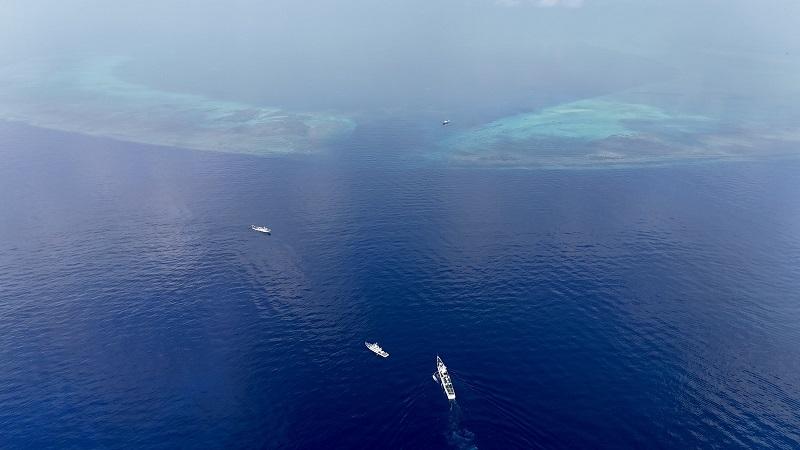
It has been eight years since an international tribunal in The Hague, Netherlands invalidated China’s nine-dash line claim over the South China Sea, and yet several maritime zones of the Philippines remain under dispute to this day.
In this second part of the series tackling the contested features in the West Philippine Sea, GMA News Online delved into the Scarborough Shoal, locally known as the Panatag Shoal or Bajo de Masinloc.
FIRST OF A SERIES ON WPS: What is the Ayungin Shoal and why is it important?
THIRD OF A SERIES ON WPS: What is the Sabina Shoal and why is it important?
The Scarborough Shoal, a triangular coral reef formation which surrounds a lagoon, is famed for its rich waters and marine resources. It is located 124 nautical miles off Masinloc, Zambales, and is considered within the Philippines’ 200-nautical mile exclusive economic zone, based on the 1982 United Nations Convention on the Law of the Sea (UNCLOS).
In 2016, the Hague-based Permanent Court of Arbitration (PCA) deemed Scarborough Shoal a high-tide feature, meaning a number of its rocks remained exposed at high tide.
Despite this, the tribunal found that the high-tide features at the shoal “are rocks that cannot sustain human habitation or economic life of their own” and therefore shall have no exclusive economic zone or continental shelf.
China, which does not recognize the ruling, also claims sovereignty over the Scarborough Shoal, which it calls “Huangyan Dao” and treats it as part of the Zhongsha Islands.
For retired Supreme Court Associate Justice Antonio Carpio, the shoal has been in the territory of the Philippines since 1734, when it was called “Panacot.”
“The official maps of the Philippine territory during the Spanish regime, starting from 1734, 1808, until 1875, that’s just a few years before the Paris Treaty of 1898, all show that Scarborough Shoal is part of Philippine territory,” Carpio said.
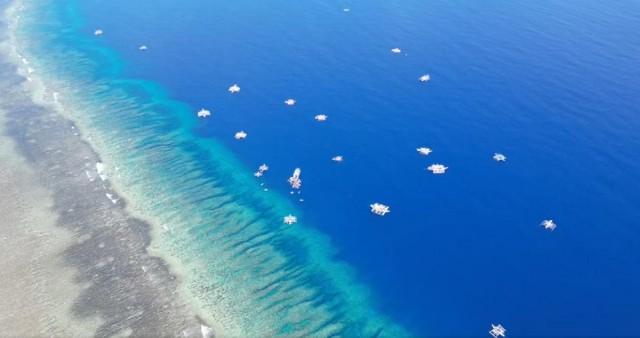
He revealed that China only claimed other islands in the West Philippine Sea in 1947 when it published its nine-dash line map. Back then, he said China did not even have a name for Scarborough Shoal and only named it in 1915.
When it comes to fishing, the international tribunal acknowledged that the shoal has been a traditional fishing ground for fishermen of many nationalities, including the Philippines, China, Taiwan, and Vietnam. It also accepted that the claims of both the Philippines and China to have traditionally fished at the shoal are “accurate and advanced in good faith.”
The tribunal, however, noted that China had violated its duty to respect the traditional fishing rights of Filipino fishermen by restricting their access to the shoal after May 2012.
Twelve years ago, the Scarborough Shoal became the site of a two-month standoff between Manila and Beijing. The tension started when the Philippine forces spotted Chinese fishermen collecting endangered giant clams, corals, and other marine resources from the area.
But before Philippine authorities could make arrests, Chinese ships blocked their way. Following this, the Philippine Coast Guard (PCG) said that Chinese vessels guarded the lagoon and Filipino ships and fishing boats were not able to enter the area.
The standoff had even threatened to spill over to trade and tourism when China tightened the regulation on banana imports from the Philippines and several Chinese tour groups reportedly canceled their visits to the Philippines.
What happened in 2012 was what prompted the administration of President Benigno "Noynoy" Aquino III to sue China before the PCA in 2013. The rest, as people say, is history.
Attacks
Despite the Philippines’ historic arbitral win, Filipino fishers still continue to bear the brunt of the diplomatic row with China up until now.
Among the tensions that the Scarborough Shoal recently saw was the China Coast Guard (CCG) firing water cannons at Philippine civilian vessels on a mission to bring food and fuel to fishermen in the area.
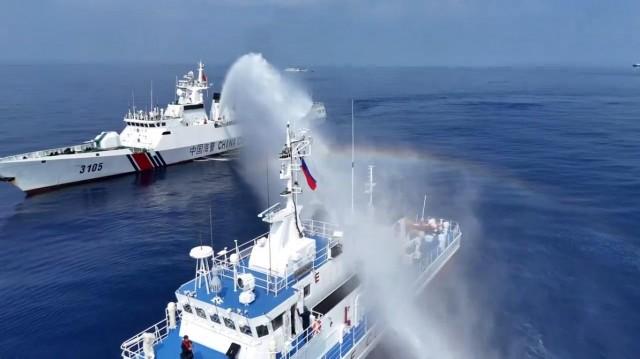
The April 30 attack by two large CCG vessels caused damage to the left side of BRP Bagacay, including the railings and the LED display. The canopy at the back of the ship was also heavily damaged.
FIRST PERSON: It tasted like seawater
PCG spokesperson for the West Philippine Sea Commodore Jay Tarriela said that the CCG may have used around 200 pounds per square inch of pressure that made the metal railings of a Philippine ship bend.
BRP Bankaw, a vessel of the Bureau of Fisheries and Aquatic Resources (BFAR), which was also part of the mission, was also water cannoned by Chinese vessels that day. It sustained damage to its heating, ventilation and air conditioning, electrical, navigation, radio systems, and superficial hull.
Aside from these, the Philippine vessels also encountered dangerous maneuvers and obstruction from four CCG vessels and six Chinese maritime militia vessels, according to Tarriela.
The PCG official also said that the CCG back then installed a 380-meter floating barrier that covered the entire entrance of the Scarborough Shoal, restricting access to the area.
A Reuters report quoted Chinese ministry spokesperson Lin Jin as telling the Philippines to stop provocations and to not challenge China's determination to safeguard its "sovereignty."
In September 2023, the CCG also installed a floating barrier, which had an estimated length of 300 meters, in the southeast portion of Scarborough Shoal, preventing Filipino fishermen from entering the area to conduct their fishing activities.
It was reported by the Filipino fishermen that the CCG vessels usually install floating barriers whenever they monitor a large number of Filipino fishermen in the area, said the PCG.
The PCG thereafter removed the “dangerous” floating barrier upon the instructions of President Ferdinand “Bongbong” Marcos Jr. and National Security Adviser Eduardo Año, who also heads the National Task Force for the West Philippine Sea.
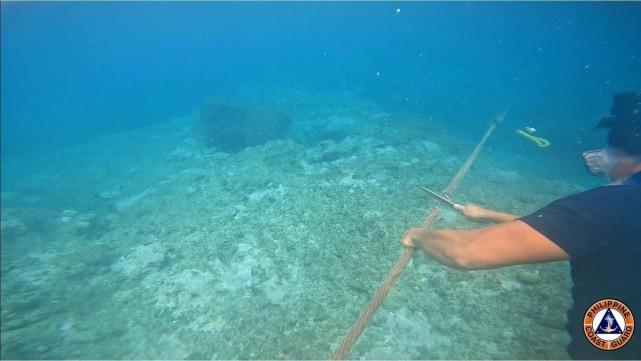
China brushed off the move, saying that what the Philippines did “looks like nothing more than self-amusement,” according to Chinese Foreign Ministry spokesman Wang Wenbin.
In February this year, the PCG said that another floating barrier was installed by CCG at the Scarborough Shoal, but this was removed when the BFAR provided supplies to Filipino fisherfolk in the area.
The same month, BFAR said it received reports from local fishermen that foreign fisherfolk—said to be from China and Vietnam—practice cyanide fishing at the shoal and left the lagoon “heavily damaged.”
BFAR said that Filipino fishermen had told them that China was deliberately harming the Scarborough Shoal to deter Filipinos from fishing at the shoal.
For PCG’s part, Tarriela said that they didn’t have a scientific study or any evidence that would suggest that the cyanide fishing in the area could be attributed to the Chinese or the Vietnamese fishermen.
Zambales fishermen had also reported harassment from the CCG, saying they were asked to return the shells they collected from the sea. The incident occurred near the south entrance of the shoal.
This prompted Defense Secretary Gilberto Teodoro Jr. to advise small fishermen not to go to the Scarborough Shoal alone.
Civilian mission
All of these activities and aggression by China at the Scarborough Shoal ignited the Atin Ito Coalition to successfully conduct a civilian mission to the area from May 14 to 17.
Rafaela David, co-convenor of the coalition, stressed that the mission was a legitimate exercise of Filipino citizens' rights and Philippine sovereign rights based on international law.
"The reported heavy presence of Chinese marine vessels in Bajo de Masinloc is lamentable, but not surprising. It only underscores the urgency of civilianizing the area in response to China's militarization,” David said.
Around 200 volunteers and 100 fishermen aboard five wooden bancas and 100 smaller boats set sail from Masinloc in Zambales en route to the Scarborough Shoal. The advance team of the Philippine civilian mission was also able to break through the blockade of Chinese vessels and reached the shoal.
Atin Ito said Filipino fishermen and youth volunteers even conducted fishing activities in the area despite the intimidation of Chinese vessels.
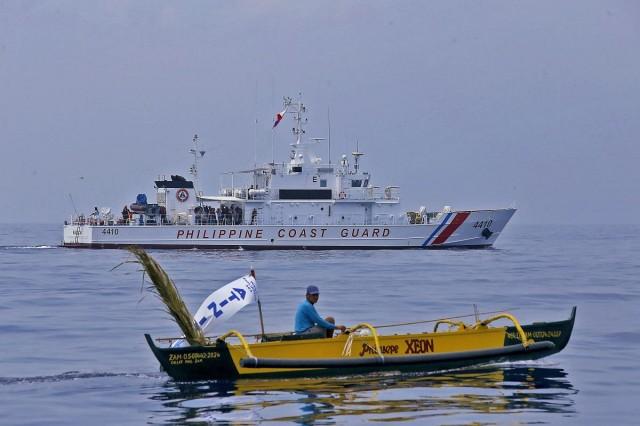
But before the civilian mission, China sent a “huge force” allegedly to seal off Scarborough Shoal, according to former US Air Force official and ex-Defense Attaché Ray Powell. Forty-three Chinese vessels, including a warship, also moved to the shoal amid the mission.
Days after the mission was concluded, Powell reported that CCG 5901, known as "The Monster," the largest coast guard ship in the world, conducted a “brief intrusive patrol” near Scarborough Shoal.
Philippine Navy spokesperson for the WPS Commodore Roy Trinidad confirmed that “The Monster” was located 50 nautical miles from the shoal.
China did not stop there as it also announced a unilateral fishing ban in the South China Sea from May 1 to September 16. It also issued a regulation allowing its coast guard to detain foreigners “trespassing” in the South China Sea for up to 60 days without trial, starting June 15.
The Philippines’ Department of Foreign Affairs (DFA) already protested the ban, saying it violates international law and undermined the country's sovereignty and maritime rights.
As to the “no trespass” rule, the Armed Forces of the Philippines (AFP) maintained that the Philippines will not be deterred or intimidated by such. — BM/KG, GMA Integrated News




